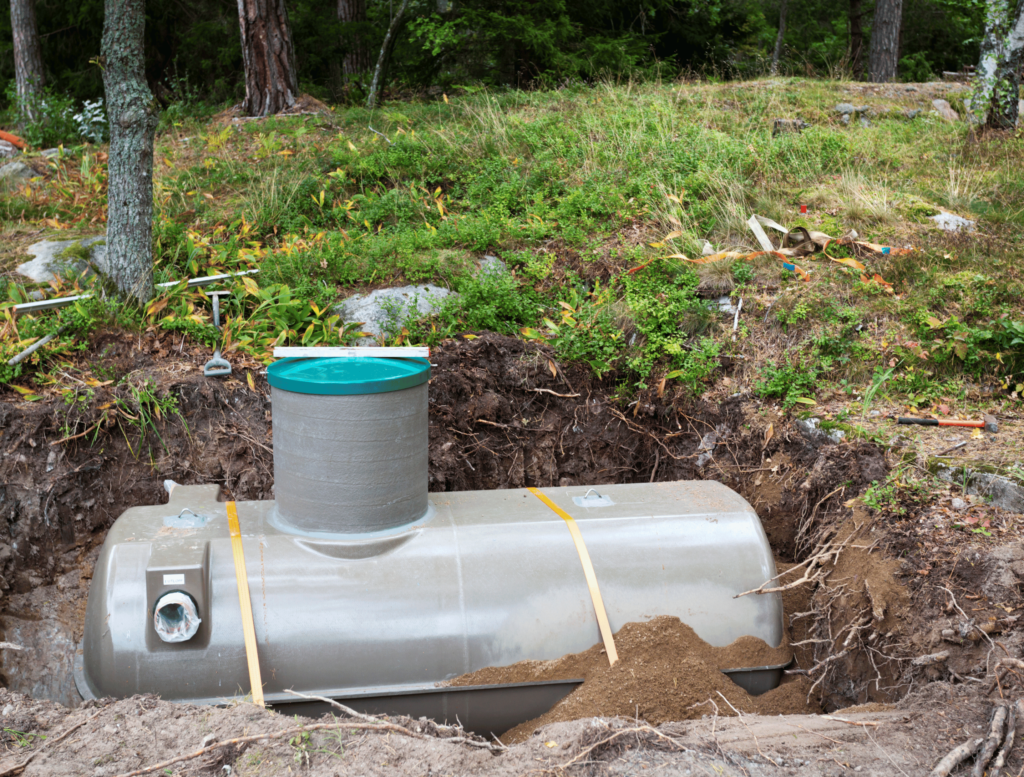Understanding Septic Systems – A Beginner’s Guide.
Embarking on the journey of understanding septic systems is as crucial as any other home maintenance task. This beginner’s guide aims to demystify the workings of a septic system, providing a deeper insight into its operation. Whether you own a septic system already or are looking to get one installed, you will know everything you need by the end of this article.

I. What is a Septic System?
First things first. What even is a septic system? Well, a septic system is an essential component of rural residential infrastructure, as it handles and treats household wastewater in areas lacking centralized sewer systems. It is mostly compromised of two main elements:
- Septic Tank: A watertight container buried underground, where waste separates into three layers: solids (sludge) at the bottom, wastewater (effluent) in the middle, and fats/oils (scum) at the top.
- Drain Field: Also known as a leach field, this area receives the effluent from the tank. Perforated pipes laid in gravel-lined trenches allow the effluent to slowly seep and get naturally treated by soil microorganisms.
II. Understanding Septic System Types
For those that are looking to have a septic system installed in their homes, understanding the different types of septic systems and which is the best solution for you is a great way to start.
- Conventional Drain Field System: Features a standard tank and gravel-filled drain field trenches. Common in areas with adequate soil depth and permeability.
- Aerobic Treatment System (ATS): Incorporates oxygen to enhance waste breakdown. Ideal for high groundwater areas or smaller lots.
- Low-Pressure Dosing (LPD): The Low-Pressure Dosing system pumps untreated sewage to a drain field using low pressure.
The septic system that best fits your home is typically decided by the type and condition of the soil in your plot. If you are interested in an installation, you can contact us for more information.
III. Installation and Placement
Once the type of septic system that will best fit your property is decided it is time to have the system installed. Proper installation and placement are pivotal for a septic system’s functionality. Some key factors to keep in mind include:
- Soil Evaluation: Assessing soil type and absorption rate to ensure efficient filtration.
- Site Planning: Complying with local health department regulations regarding distance from the home, water bodies, and property boundaries.
- Professional Installation: Employing certified professionals is essential for complying with environmental and health standards.
IV. Daily Operation and Maintenance
Now that your home has its very own septic system it is important to know how to take care of it. Effective daily management extends the life and efficiency of your septic system. Some key practices include:
- Water Efficiency: Use water-saving fixtures to reduce the load on the system.
- Waste Disposal: Only human waste and toilet paper should be flushed. Avoid putting food scraps, grease, or harmful chemicals down the drain.
- Regular Maintenance: Schedule inspections and tank pumping every 3-5 years. Signs of a well-functioning system include quiet operation and odorless operation, while slow drains or sewage backup indicate issues.
I plan to write a whole article going more in depth about the basics of septic system maintenance, so keep an eye out for that in the coming week.
V. Troubleshooting Common Issues
Septic systems are not always flawless machines. Some problems might arise along the way, but most have simple fixes. Understanding septic systems and their common problems will aid you in identifying these issues and solving them early:
- Odors: Often indicate a full tank or blockages.
- Slow Drains: May suggest system overload or drain field issues.
- Wet Spots in Yard: Can signal a leaking tank or drain field failure.
Professional intervention is recommended for persistent or complex problems. If you are facing these types of issues and currently reside in San Antonio or it’s surrounding areas you can check out our maintenance services. We are proud of the experience we bring to the table and our affordable rates. Check us out for a free consultation!
VI. Septic System Care During Extreme Weather
Weather conditions can significantly impact your septic system. You can use the following rule of thumb for how to manage your septic system during rain or drought seasons.
- Heavy Rain/Floods: Minimize water use to prevent overloading.
- Drought: Regular, light water usage maintains moisture and bacterial balance.
This is a very general rule of thumb that applies throughout the year. If you are looking for more information about the effects of weather and the seasons, check out our previous article which to know more about the common problems septic systems face during different types of weather and how to solve them.
Conclusion
Understanding septic systems is a cornerstone of responsible homeownership, blending environmental responsibility with practical home management. For more detailed advice or specific concerns, always consult with professional septic system experts. Your experiences and queries are welcome in the comments section.
Additional Resources


